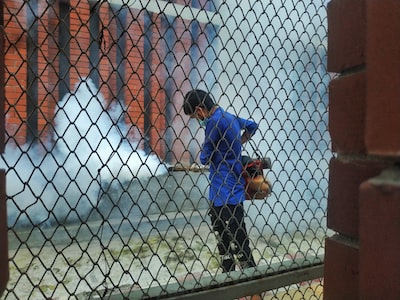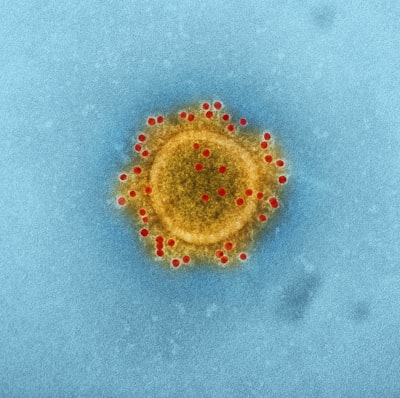The world’s deadliest animal is smaller than a pencil eraser
The world’s deadliest animal is smaller than a pencil eraser and weighs about two-thousandths of a gram – less than the weight of a drop of rain. Every year, it kills an estimated 700,000 people, with what scientists sarcastically refer to as a “blood meal”.
It’s the mosquito—and, increasingly, it’s on the move.

These global changes, which will accelerate as the planet warms, have raised concerns that mosquito-borne diseases will increase even more in the coming months and years.
In June alone, five cases of locally transmitted malaria were discovered in Texas and Florida: the first cases detected in the United States in two decades. Experts say these cases are unlikely to be related to rising temperatures – conditions in Florida and Texas are already suitable for malaria-carrying mosquitoes. But as urban heat islands expand and temperatures rise, mosquito-borne diseases are expected to spread beyond their specific areas.
Climate change is expanding the range
“Climate change is expanding the range of mosquitoes,” said Sadie Ryan, professor of medical geography at the University of Florida.
Earlier this year, researchers at Georgetown University published a paper in Biology Letters showing that the range of malaria mosquitoes has already shifted away from the equator and to higher altitudes in Africa over the past century.

There has been a steady decline in malaria cases worldwide for almost two decades. But that progress has stalled as cases have decreased and even increased in some countries over the years. According to data from the World Health Organisation, cases are expected to increase from a recent low of 231 million in 2018 to an estimated 247 million in 2021.
Mosquitoes don’t kill like sharks or lions
Mosquitoes don’t kill like sharks or lions: Instead, they are “carriers” of many painful and life-threatening diseases, from dengue fever to malaria and chikungunya. When a mosquito “bites” someone—by thrusting its needle-filled proboscis deep into a blood vessel—it both sucks up the blood and leaves behind some of its saliva.

That saliva, when contaminated with viruses or parasites, can make people sick, often painfully. Dengue fever is also known as “break bone” fever; The name chikungunya comes from an African word meaning “to deform”, as patients often bend over due to severe joint and muscle pain.

And there’s reason to think that painful and sometimes deadly diseases will spread as temperatures warm. Like all insects, mosquitoes are cold-blooded and depend on ambient temperature to maintain their body temperature. They, in particular, thrive at temperatures between 50 and 95 degrees Fahrenheit—and, unlike most humans, who wither in high humidity, mosquitoes love moist air.
temperature and humidity
For example, in the United States, many areas are already seeing an increase in “mosquito days” due to rising temperatures. Between 1979 and 2022, many areas of the country saw an increase in the number of days when temperature and humidity were a kind of “Goldilocks zone” for mosquitoes, according to a report by research and communications nonprofit Climate Central.
“We’re definitely looking at prolonging the season for mosquitoes,” Ryan explained.
Different mosquitoes thrive in different temperatures.
Different mosquitoes thrive in different temperatures. The Anopheles mosquito transmits malaria; Aedes aegypti and Aedes albopictus mosquitoes spread diseases like dengue and chikungunya. But A. aegypti A. albopictus thrives at higher temperatures. As different parts of the world warm at different rates, some mosquito-borne diseases will flourish while others will be stressed.
According to a study published in 2019, both species are expected to spread northward in the United States over the next 30 years. By 2050, a. aegypti may extend its range into the Mid-Atlantic and Midwest; A. albopictus can make it as far north as Michigan and Minnesota.
There are other factors that are changing the pattern of disease transmission. As urban areas expand and populations increase, A. aegypti – which prefer to be around humans – can find more places to live and more people to feed on. For example, the species has made a profit in Southern California, angering residents of the region.
In some areas, mosquito migration can have both winners and losers. There is an upper limit to the easy transmission of many mosquito-borne diseases – if it gets too hot, diseases such as dengue will no longer be prevalent in the tropics and will instead continue to move towards the poles.
But Ryan says that shouldn’t provide much comfort. “It is not fun for anyone to live in a temperature that is too high for dengue transmission,” he said.
If you have liked this information, then do share and like this article. Stay connected to goblogging to read more articles like this.
Image Credit- (@Unsplash)
- Animals
- Beauty
- birds
- Business
- career
- devices
- Do You Know That facts ?
- drinks
- Education
- Entertainment
- Festivals
- finance
- Flowers
- Food
- FRUITS
- health
- Indian Festivals
- INSECTS
- Insurance
- Jobs
- Just Wild Life
- lawn
- Lifestyle
- places
- Plants
- reasons
- short stories
- SOIL
- sports
- STRATEGIES
- substance
- Technology
- temples
- Travel
- treaditional
- trending news
- Uncategorized
- vehicles
- VIRUSES
- WATER
- workouts
- Can You Leave Chargers Plugged In All the Time? An Expert’s Insight
- PUBG Mobile 3.7 update: Check out soon Expected date, new features and more
- Fortnite: New and Upcoming Mythic and Exotic Items in Fortnite Chapter 6, Season 2
- Fortnite: Ways to increase your power in Save The World
- How the third constitutional presidency could be brought about by Trump
